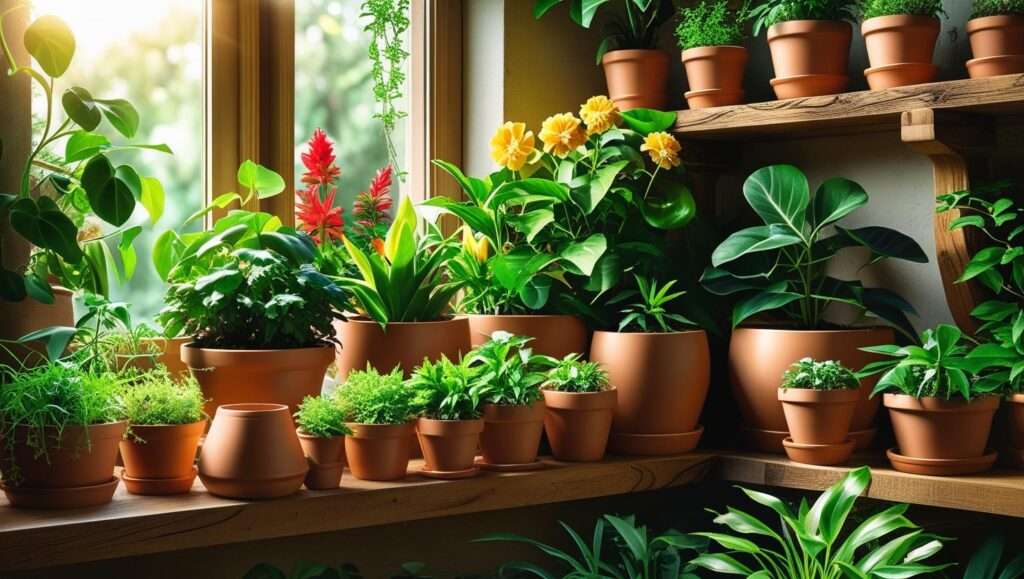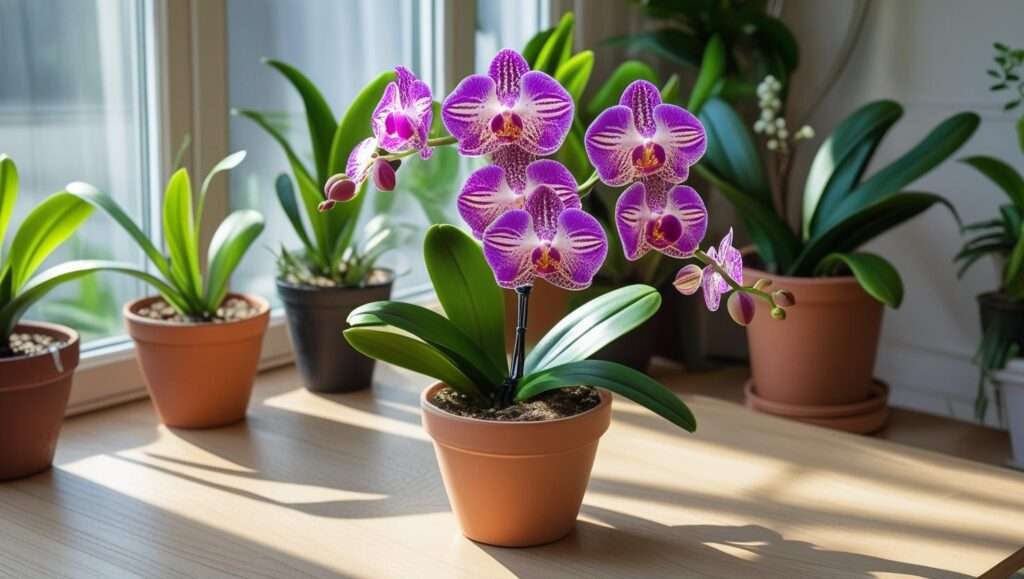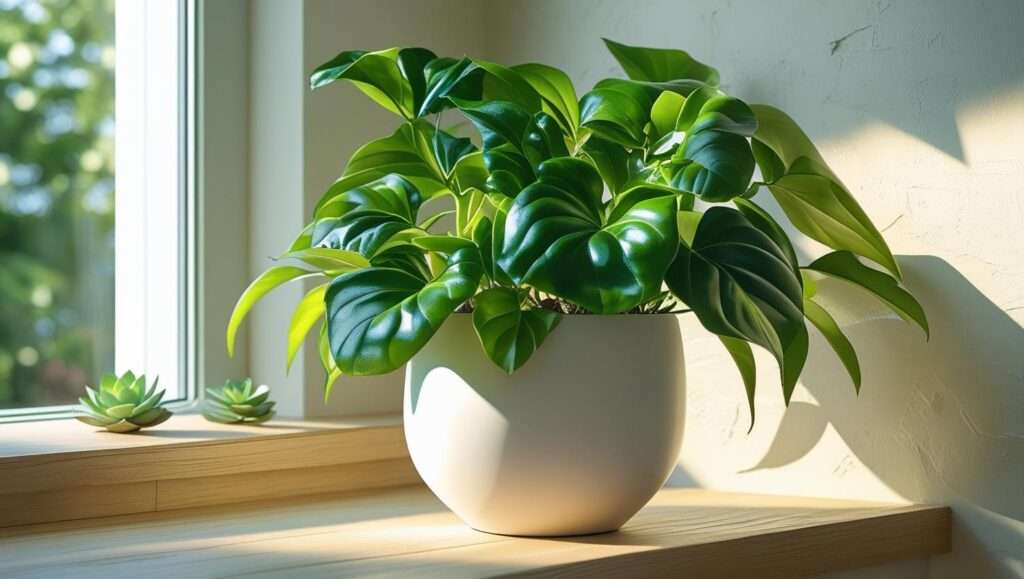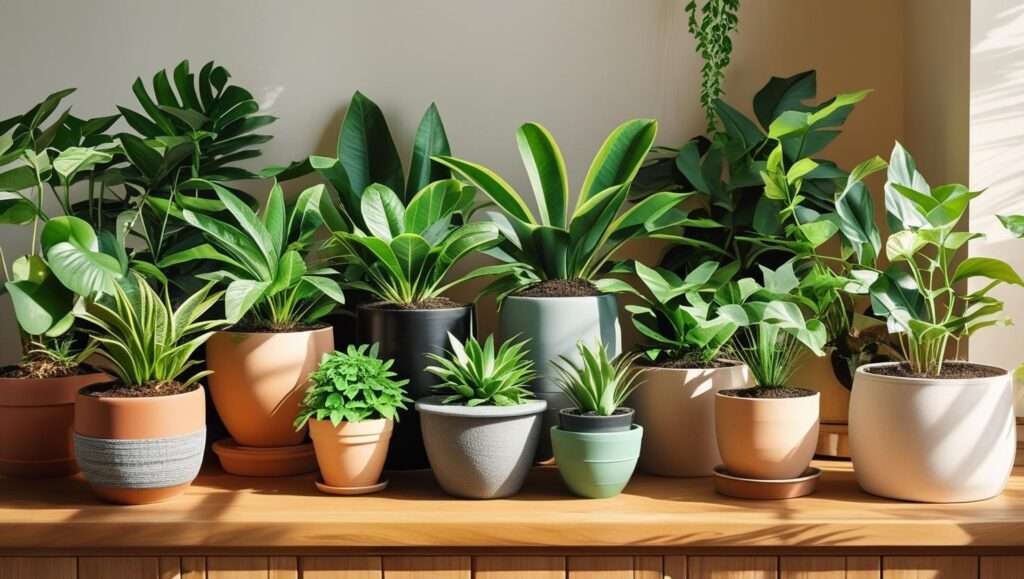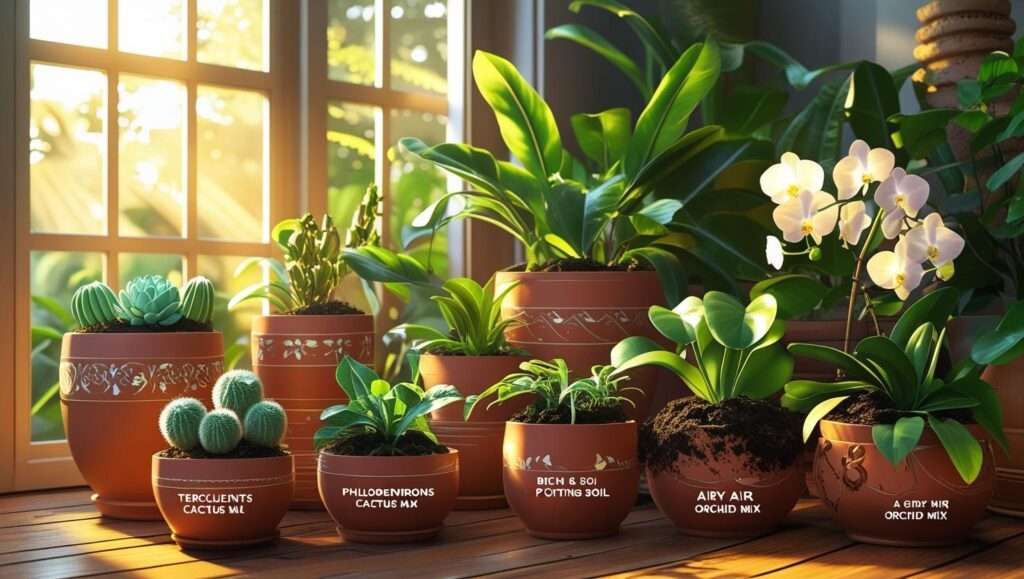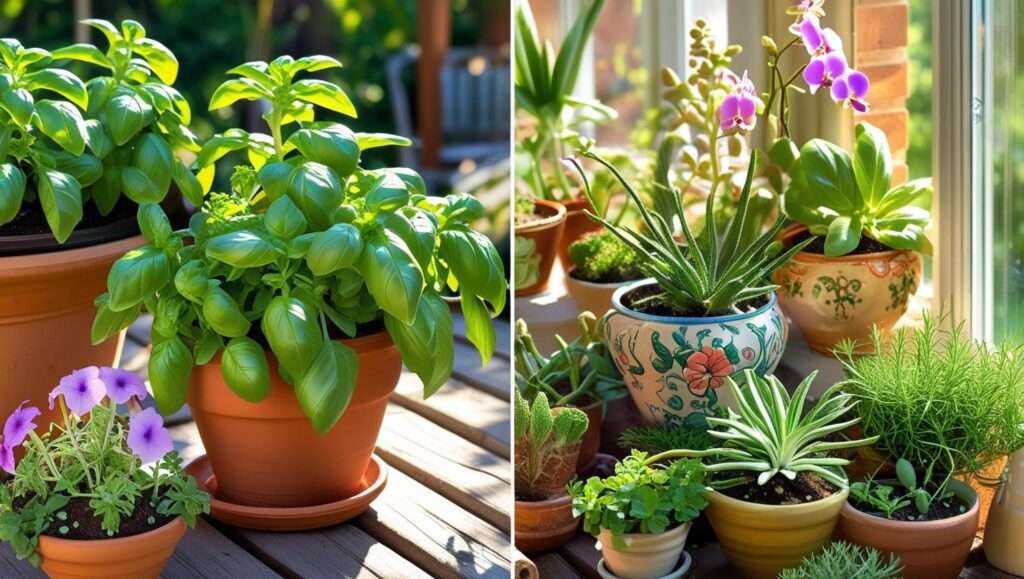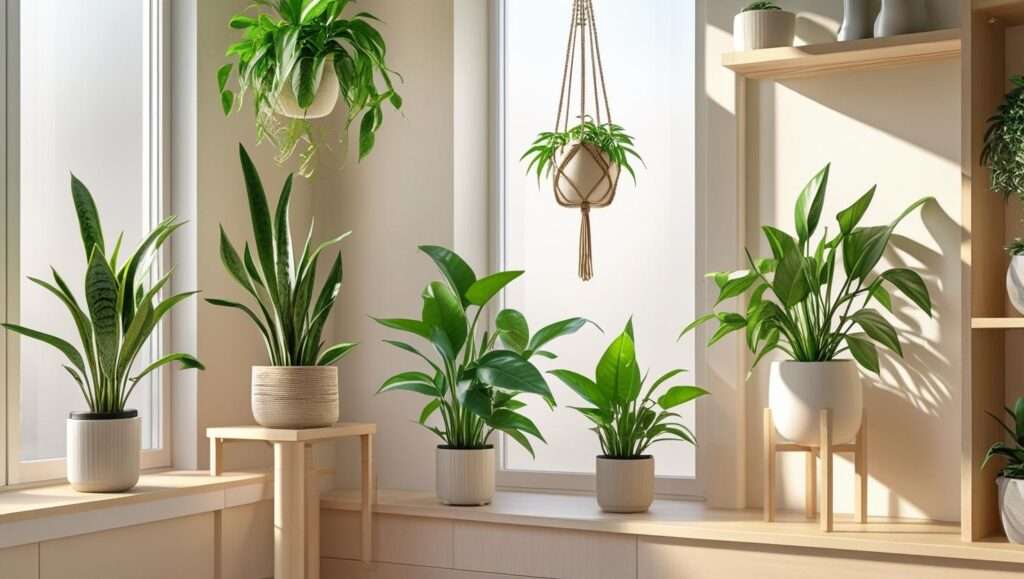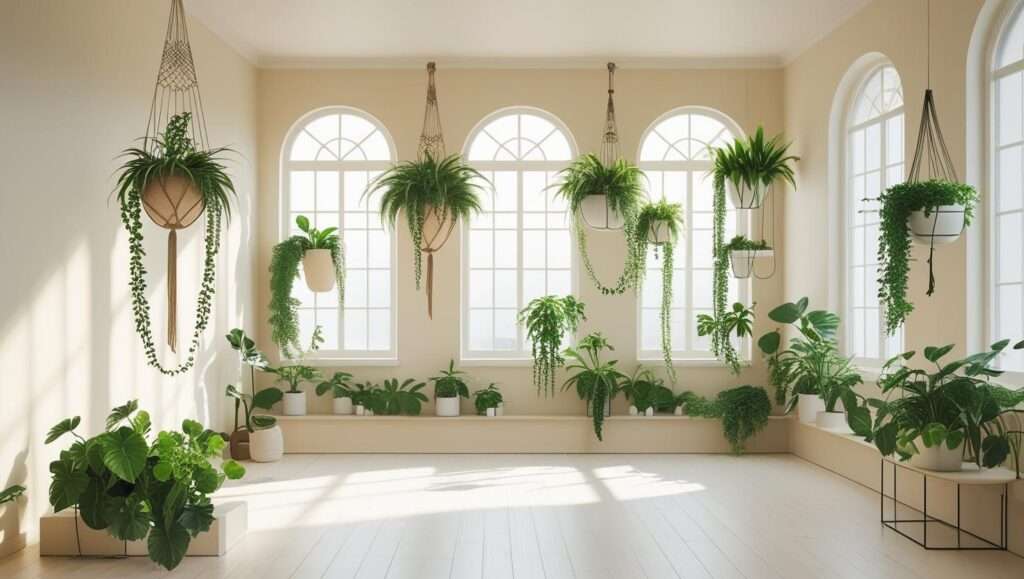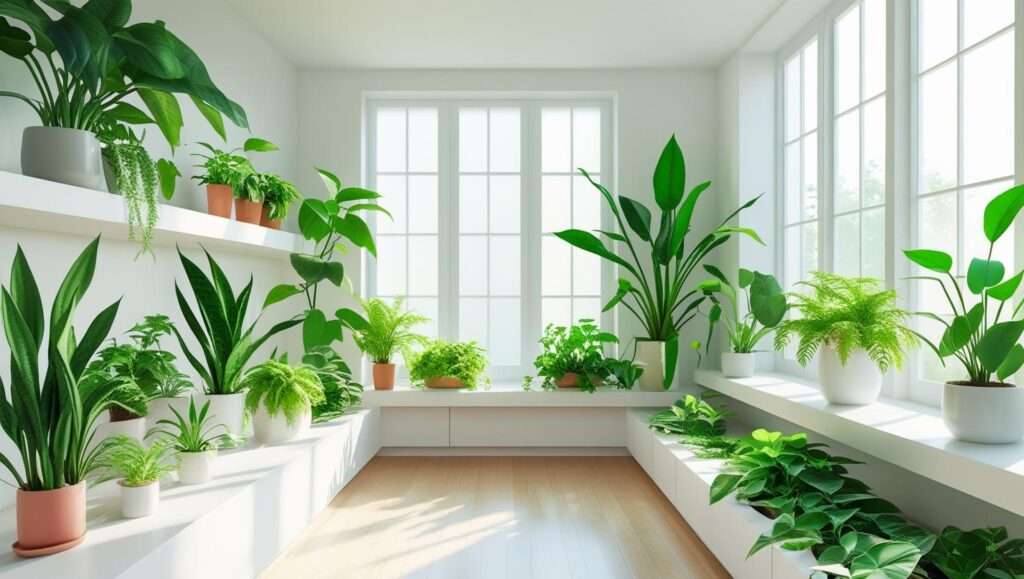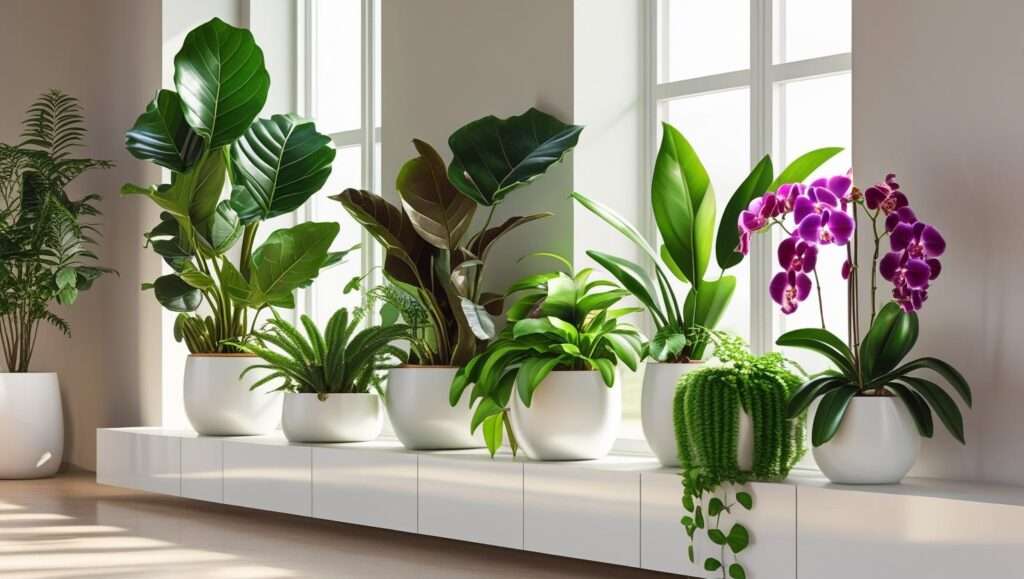Imagine walking into your office: fluorescent lights buzz overhead, the air feels stale, and your desk looks like a sea of gray. Now, picture that same space transformed with lush green office plants, instantly lifting your mood and sharpening your focus. Office plants do more than beautify your workspace—they purify the air, reduce stress, and boost productivity. Studies, like the NASA Clean Air Study, show plants can remove toxins, while a 2014 University of Exeter study found they increase workplace focus by up to 15%. Whether you’re a busy professional or a plant novice, this guide introduces seven low-maintenance office plants that thrive in typical office conditions, along with expert care tips to create a healthier, more vibrant workspace.
Why Office Plants Are a Game-Changer for Your Workspace

The Science Behind Plants and Productivity
Plants aren’t just decor—they’re productivity powerhouses. A 2014 study from the University of Exeter revealed that adding greenery to offices increased employee focus by 15% and workplace satisfaction by 40%. Plants reduce stress hormones like cortisol, fostering a calmer, more creative environment. Another study from the University of Technology, Sydney, found that employees in plant-filled offices reported a 20% drop in stress-related complaints. By oxygenating the air and creating a natural ambiance, office plants help you stay sharp and engaged during long workdays.
Air Purification Benefits
Office air can be a cocktail of toxins—benzene from printers, formaldehyde from furniture, and ammonia from cleaning products. The NASA Clean Air Study identified plants as natural air purifiers, capable of filtering these harmful compounds. Plants like snake plants and peace lilies excel at removing toxins while increasing humidity, countering the dry air from air conditioning. This not only improves air quality but also reduces headaches and respiratory irritation, making your workspace healthier.
Aesthetic and Psychological Impact
Greenery transforms sterile offices into inviting spaces. A 2020 case study of a Seattle tech firm showed a 10% morale boost after introducing plants to their open-plan office. Plants create a sense of calm, reduce visual fatigue, and align with biophilic design principles, which emphasize human connection to nature. Whether it’s a cascading pothos on a shelf or a sleek snake plant in a corner, office plants make your workspace feel alive and inspiring.
What Makes a Plant “Low-Maintenance” for the Office?
Key Characteristics of Low-Maintenance Plants
Low-maintenance plants are perfect for busy offices because they thrive under neglect. They tolerate low or artificial light, require infrequent watering, and withstand temperature swings common in climate-controlled environments. These plants don’t demand constant attention, making them ideal for professionals juggling tight schedules. For example, a ZZ plant can survive weeks without water, while a snake plant thrives under fluorescent lights.
Why These Plants Suit Office Environments

Offices often have limited natural light, relying on fluorescent or LED bulbs, and air conditioning that dries out soil. Low-maintenance plants adapt to these conditions effortlessly. They’re resilient to irregular care, dusty surfaces, and occasional neglect, ensuring they stay vibrant even if you forget to water them during a hectic week. By choosing plants suited to these challenges, you save time and maintain a green workspace.
The 7 Best Low-Maintenance Office Plants
1. Snake Plant (Sansevieria)
Description: Known for its striking, upright leaves, the snake plant is a bold addition to any office. Its long, sword-like foliage comes in shades of green with variegated patterns.
Benefits: This plant is a top air purifier, removing toxins like benzene and formaldehyde. Uniquely, it releases oxygen at night, improving air quality around the clock. Its durability makes it nearly indestructible, perfect for busy offices.
Care Tips:
- Water every 2–3 weeks; let soil dry completely between waterings.
- Thrives in low to bright indirect light; tolerates fluorescent lighting.
- Use well-draining soil to prevent root rot.
Why It’s Great: A favorite among plant novices, the snake plant requires minimal care and adds a modern, sculptural touch to desks or corners.
2. Pothos (Epipremnum aureum)
Description: With heart-shaped leaves and trailing vines, pothos adds a lush, cascading effect to shelves or hanging planters.
Benefits: Pothos purifies air by filtering toxins and grows quickly, creating a green focal point. Its versatility suits small desks or large office spaces.
Care Tips:
- Water when the top inch of soil feels dry (typically every 1–2 weeks).
- Thrives in low to moderate light; avoid direct sunlight to prevent leaf burn.
- Prune vines to encourage bushier growth, as advised by horticulturist Dr. Jane Green: “Regular trimming keeps pothos vibrant and full.”
Expert Insight: Propagate cuttings in water to share with colleagues, fostering a green office culture.
3. ZZ Plant (Zamioculcas zamiifolia)
Description: The ZZ plant boasts glossy, dark green leaves that add sophistication to any workspace. Its slow growth keeps it low-maintenance.
Benefits: It tolerates extreme neglect, surviving in low light and with infrequent watering. Its waxy leaves resist dust, making it ideal for offices.
Care Tips:
- Water every 2–4 weeks; allow soil to dry out completely.
- Thrives in low to medium light; avoid direct sun to prevent scorching.
- Use a well-draining potting mix.
Real-World Example: A San Francisco startup reported brighter cubicles and happier employees after adding ZZ plants to their office.
4. Peace Lily (Spathiphyllum)
Description: With elegant white blooms and lush green foliage, the peace lily brings a touch of serenity to offices.
Benefits: A top air purifier, it removes toxins like ammonia and benzene. Its blooms add aesthetic appeal, boosting workplace morale.
Care Tips:
- Keep soil consistently moist but not soggy; water weekly.
- Prefers low to medium light; ideal for offices with limited windows.
- Note: Mildly toxic to pets, so place out of reach in pet-friendly offices.
Why It’s Great: Its graceful appearance and air-cleaning prowess make it a standout choice.
5. Spider Plant (Chlorophytum comosum)
Description: Known for its arching leaves and baby plantlets, the spider plant is playful yet elegant.
Benefits: It’s a NASA-approved air purifier, removing toxins like carbon monoxide. Its plantlets are easy to propagate, perfect for sharing.
Care Tips:
- Water weekly, keeping soil slightly moist.
- Thrives in indirect light; tolerates fluorescent lighting.
- Trim plantlets to propagate or maintain shape.
Fun Fact: Spider plants are safe for pets, making them ideal for pet-friendly offices.
6. Cast Iron Plant (Aspidistra elatior)
Description: With dark green, leathery leaves, the cast iron plant is as tough as its name suggests.
Benefits: It survives low light, irregular watering, and dusty conditions, making it perfect for low-maintenance offices.
Care Tips:
- Water sparingly, every 2–3 weeks; let soil dry out.
- Tolerates low light and temperature fluctuations.
- Clean leaves occasionally to remove dust.
Why It’s Great: Its resilience makes it a go-to for offices with minimal plant-care time.
7. Aloe Vera
Description: This succulent features thick, fleshy leaves that store water, giving it a unique, sculptural look.
Benefits: Aloe purifies air and offers medicinal gel for minor burns or cuts. Its compact size suits sunny desks or windowsills.
Care Tips:
- Water every 2–3 weeks; ensure soil dries completely.
- Needs bright, indirect light; ideal for offices with sunny spots.
- Use a cactus-specific potting mix for drainage.
Tip: Place near a window to maximize its growth and vibrancy.
How to Choose the Right Plant for Your Office
Assessing Your Office Environment
Selecting the perfect plant starts with understanding your office conditions. Evaluate:
- Lighting: Measure natural or artificial light levels (low, medium, bright).
- Space: Consider desk, shelf, or floor space for pots or hanging planters.
- Time: Assess how much time you can dedicate to plant care.
Checklist:
- Low light? Choose snake plant or ZZ plant.
- Small desk? Opt for pothos or spider plant.
- Busy schedule? Prioritize cast iron plant or aloe vera.
Matching Plants to Your Needs
| Plant | Light Needs | Watering Frequency | Benefits |
|---|---|---|---|
| Snake Plant | Low to Bright | Every 2–3 weeks | Air purification, durability |
| Pothos | Low to Moderate | Every 1–2 weeks | Air cleaning, aesthetic |
| ZZ Plant | Low to Medium | Every 2–4 weeks | Neglect-tolerant, sleek |
| Peace Lily | Low to Medium | Weekly | Air purification, elegant |
| Spider Plant | Indirect | Weekly | Air cleaning, propagatable |
| Cast Iron Plant | Low | Every 2–3 weeks | Resilient, low-maintenance |
| Aloe Vera | Bright Indirect | Every 2–3 weeks | Medicinal, compact |
Avoiding Common Mistakes
- Overwatering: The leading cause of plant death. Check soil dryness before watering.
- Poor Drainage: Use pots with drainage holes to prevent root rot.
- Wrong Light: Avoid placing low-light plants in direct sun or sun-loving plants in dim corners.
Practical Care Tips for Keeping Office Plants Thriving

Watering and Feeding
Proper watering is the cornerstone of healthy office plants. Most low-maintenance plants need water only when the top inch of soil feels dry to the touch. Overwatering is a common mistake, leading to root rot and yellowing leaves. For example, snake plants and ZZ plants thrive with watering every 2–4 weeks, while peace lilies prefer weekly hydration to keep soil slightly moist. Use a watering can with a narrow spout for precision, and always check soil moisture before adding water.
Fertilizing should be minimal to avoid overwhelming these hardy plants. Apply a diluted liquid houseplant fertilizer (10-10-10 NPK ratio) once every 2–3 months during the growing season (spring and summer). In fall and winter, skip fertilizing as plants enter a dormant phase. Horticulturist Dr. Sarah Bloom advises, “Less is more with low-maintenance plants—overfeeding can burn roots and stunt growth.”
Light and Placement
Office lighting often relies on fluorescent or LED bulbs, with limited natural light. Fortunately, the plants listed thrive in these conditions. Snake plants, ZZ plants, and cast iron plants tolerate low light, making them ideal for dimly lit cubicles or interior offices. Pothos and spider plants prefer indirect light but adapt to fluorescent settings, while aloe vera needs bright, indirect light near a window.
Placement Tips:
- Position plants within 3–6 feet of a light source for optimal growth.
- Rotate plants every 2–3 weeks to ensure even light exposure and prevent lopsided growth.
- Avoid placing plants near air vents or heaters, which can dry them out.
For offices with minimal windows, consider LED grow lights to supplement fluorescent lighting. These are energy-efficient and mimic natural sunlight, ensuring plants thrive.
Cleaning and Maintenance
Dust accumulation on leaves can block sunlight and hinder photosynthesis. Wipe leaves gently with a damp cloth every month, especially for glossy plants like ZZ plants and peace lilies. This not only keeps plants healthy but also enhances their aesthetic appeal. For spider plants, trim brown tips with clean scissors to maintain their look.
Regularly inspect plants for signs of stress, such as drooping or yellowing leaves. Remove dead foliage promptly to encourage new growth. If you notice sticky residue or tiny webs, you may have pests like spider mites. Treat them with a neem oil spray (mix 1 tsp neem oil with 1 quart water) applied weekly until pests disappear.
Troubleshooting Common Issues
Even low-maintenance plants can face challenges. Here’s a quick troubleshooting guide:
| Issue | Likely Cause | Solution |
|---|---|---|
| Yellow leaves | Overwatering | Reduce watering; ensure drainage |
| Drooping leaves | Underwatering or low light | Check soil; adjust light exposure |
| Brown leaf tips | Low humidity or overfeeding | Mist leaves; reduce fertilizer |
| Slow growth | Insufficient light | Move closer to light source |
Expert Tip: “Always check the soil before reacting to plant issues,” says botanist Dr. Mark Rivera. “Most problems stem from improper watering or light.”
Maximizing the Benefits of Office Plants
Boosting Productivity and Morale

Strategic plant placement can amplify their benefits. Place plants near workstations or in meeting rooms to reduce stress and enhance focus. A 2020 study from the Journal of Environmental Psychology found that employees with plants within their line of sight reported a 12% productivity increase. Grouping plants like pothos and spider plants on shelves creates a green “wall” that softens harsh office aesthetics, while a snake plant in a corner adds height and drama.
Case Study: A Chicago marketing firm introduced peace lilies and ZZ plants to their open-plan office. Within three months, employee surveys reported a 15% improvement in workplace satisfaction, with staff citing a “calmer, more inviting” environment.
Creating a Green Office Culture
Plants can foster collaboration and engagement. Encourage a team plant-care routine, where employees take turns watering or monitoring plants. This builds camaraderie and a shared sense of responsibility. Consider hosting a “plant adoption” day, where employees choose a plant for their desk, sparking conversations and creativity.
Idea: Partner with a local nursery to donate propagated spider plant or pothos cuttings, reinforcing your office’s commitment to sustainability. This initiative aligns with eco-friendly practices and boosts employee pride.
Sustainability and Wellness
Office plants align with biophilic design, which integrates nature into built environments to enhance well-being. They contribute to sustainable office initiatives by improving air quality and reducing reliance on artificial humidifiers. Plants also support mental health, with studies showing a 20% reduction in anxiety among employees in green workspaces.
To maximize impact, combine plants with other wellness strategies, like ergonomic furniture or natural light optimization. This holistic approach creates a workspace that prioritizes both productivity and employee health.
FAQs About Office Plants
Q1: How often should I water my office plants?
A: Watering frequency varies by plant. Snake plants and ZZ plants need water every 2–4 weeks, while peace lilies and spider plants prefer weekly watering. Always check if the top inch of soil is dry before watering.
Q2: Can office plants survive without natural light?
A: Yes, snake plants, ZZ plants, and cast iron plants thrive in fluorescent or low-light conditions, making them perfect for offices with minimal windows.
Q3: Are office plants safe for allergy sufferers?
A: Most low-maintenance plants, like pothos and spider plants, are low-pollen and safe for allergies. Peace lilies may cause mild reactions in sensitive individuals, so choose placement carefully.
Q4: How do I prevent pests on office plants?
A: Regular leaf cleaning and good air circulation reduce pest risks. If pests appear, use neem oil spray and isolate the plant to prevent spreading.
Q5: What’s the best plant for a small desk?
A: Pothos and spider plants are compact and versatile, fitting perfectly on small desks or shelves. Their trailing growth adds greenery without taking up much space.
Office plants are more than decor—they’re a simple, effective way to boost productivity, purify air, and enhance workplace well-being. From the resilient snake plant to the elegant peace lily, these seven low-maintenance plants thrive in typical office conditions, requiring minimal effort for maximum impact. By choosing the right plant for your space and following our expert care tips, you can transform your office into a greener, healthier environment. Start with one plant today, and watch your workspace—and your mood—flourish. Share your plant journey in the comments, and explore our related articles on indoor gardening and sustainable office practices for more inspiration.


